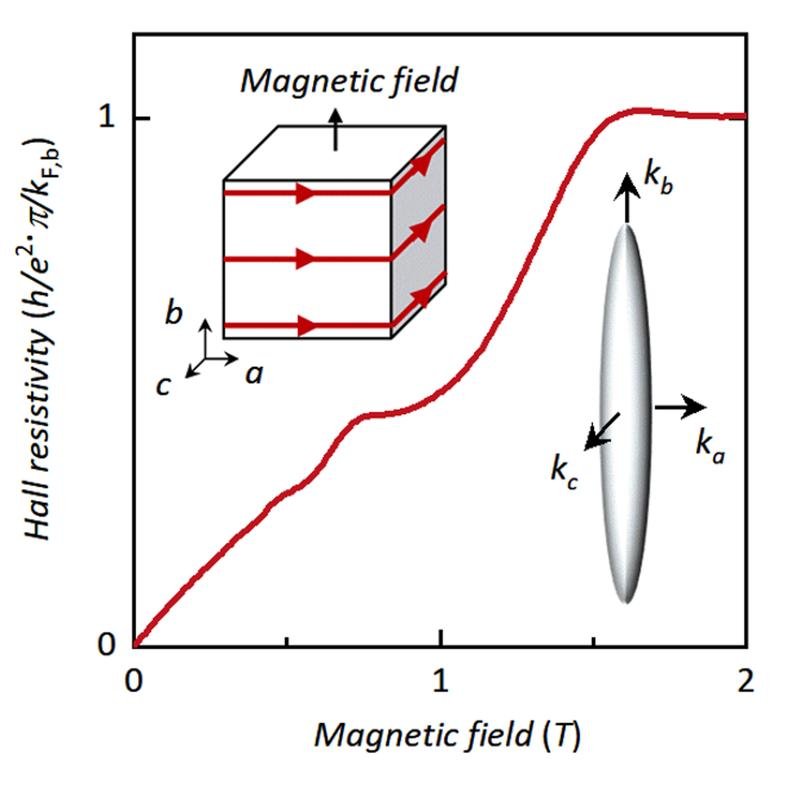

Figure caption (see last paragraph)
MPI CPfS
The quasi-quantized Hall effect is a three-dimensional relative of the Quantum Hall effect in two-dimensional systems.
The quantum Hall effect traditionally only plays a role in two-dimensional electron systems. Recently, however, a three-dimensional version of the quantum Hall effect was described in the Dirac semimetal ZrTe5. It has been suggested that this version results from a magnetic field-induced Fermi surface instability that transforms the original three-dimensional electron system into a stack of two-dimensional electron systems.
Now scientists at the Max Planck Institute for Chemical Physics of Solids in Dresden, at the Technical University of Dresden, at the Brookhaven National Laboratory in New York, at the Helmholtz Center Dresden-Rossendorf, the Max Planck Institute for Microstructure Physics in Halle and at the Würzburg-Dresden Cluster of Excellence ct.qmat were able to show that the electron system of ZrTe5, contrary to the original explanation, remains three-dimensional even in strong magnetic fields and that the quasi-quantization of the Hall effect is nevertheless directly linked to quantum-Hall physics.
The findings from the study of quantum Hall physics in the third dimension can be universally applied to conventional metals and promise a unified explanation of the plateaus that have been observed in Hall measurements in many three-dimensional materials, which were often puzzling in the past. In addition, the concept can be directly applied to generalize the two-dimensional quantum anomalous Hall effect to generic three-dimensional magnets.
Figure: Hall resistivity as a function of the applied magnetic field at 2 K in units of Planck’s constant h, the elementary charge e and the Fermi wave vector along the applied magnetic field kF,z A sketch of the sample is shown at the top left. The three-dimensional Fermi surface of the electrons in ZrTe5 is shown at the bottom right.
Wissenschaftliche Ansprechpartner:
Johannes Gooth
Originalpublikation:
Galeski, S., Ehmcke, T., Wawrzyńczak, R. et al. Origin of the quasi-quantized Hall effect in ZrTe5. Nat Commun 12, 3197 (2021).
https://doi.org/10.1038/s41467-021-23435-y
Weitere Informationen:
https://www.cpfs.mpg.de/3310301/20210527b?c=2332
https://tu-dresden.de/tu-dresden/newsportal/news/elektronen-in-der-warteschlange…














